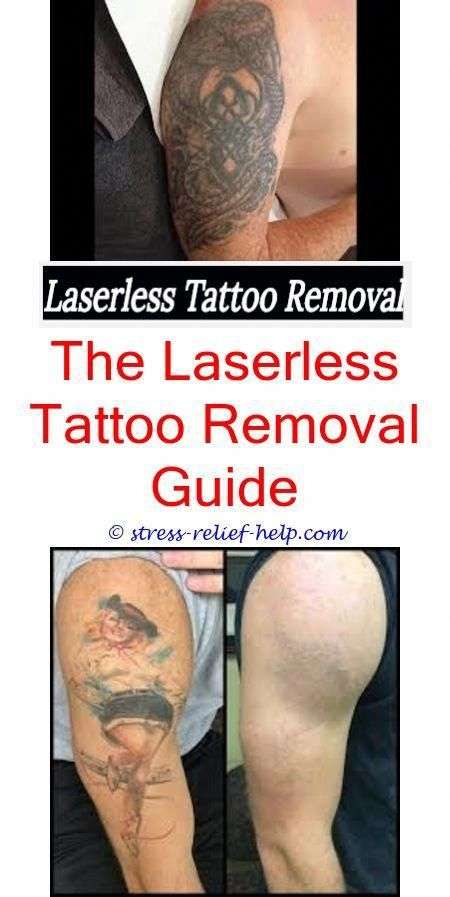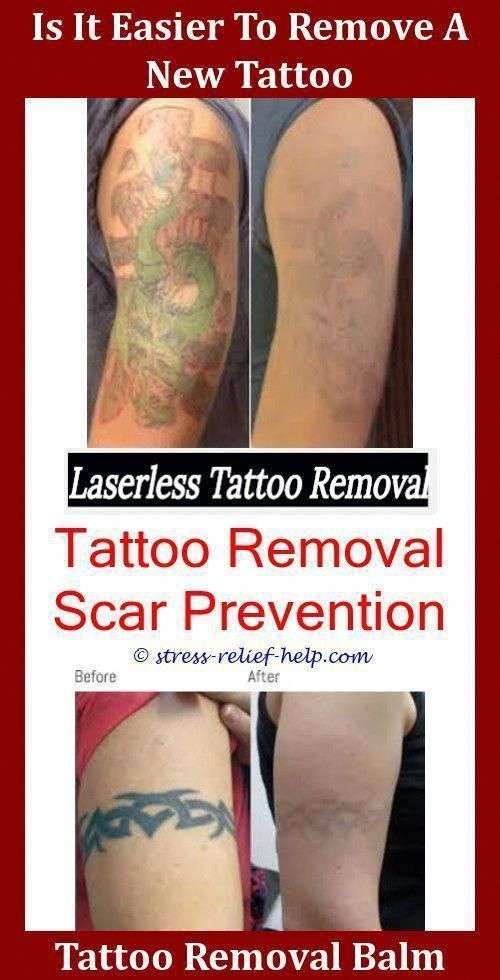Know That The Process Could Leave Scarring
If, like me, you want your ink completely removed, you should know that the skin that is left might not be flawless. While the risks are nowhere near as big when you are treated by a removal specialist or medical professional, your skin pigment can be lightened. Which, again, is all the more reason to refer back to the first point on this listgo to a qualified doctor or specialist.
Lauren Chan is a fashion expert and designer in New York City. Follow her.
Follow Your Aftercare Instructions
Following your aftercare instructions will help facilitate a speedy healing process.
Keeping the area clean and free of any lotions will help the ink site heal faster.
Also, taking care of your blisters is one of the most critical tattoo removal tips. Doing so will keep the focus on the fragmented ink to be flushed away more efficiently by your bodys white blood cells
What Will Laser Removal Cost
Laser tattoo removal can cost between US$200$500 per treatment session depending on where you choose to go. Be sure to do your research in advance by reading previous clients reviews and investigate the work of other costumers. You should consult your physician or dermatologist before you make any final decisions, and they may be able to refer you to a reputable and recommended removal specialist.
Also Check: Tattoo Removal Cost New York
Honey With Aloe Vera Yogurt And Salt
This naturally home-made concoction is a great way to get rid of an unwanted tattoo. Although it may take some time and several applications before you can get rid of the tattoo, it is undoubtedly one of the best natural ways. Moreover, the application of honey, aloe vera and yoghurt together does wonders for your skin and neither does it leave any scar behind as in the case of several other tattoo removal methods. All you need is to mix aloe vera pulp, honey, salt and yoghurt together. After you have cleaned the area of application, put the mix over it and massage the area with it. Over time and after several applications, the tattoo will fade away.
Yes It Might Leave A Shadow

The big question: is it ever truly gone? Yes and no. Even once removal is complete, youll have a faint shadow where the tattoo was.
“You, or people who have stared at your tattoo, you’ll be able to make out where it once was,” says Brauer. “But if you had a tattoo on your lower back and you’re at the beach, people’s eyes will no longer gravitate there.”
Don’t Miss: Best Soap To Use For Tattoos
Healing Your Skin: Tattoo Removal Aftercare
My skin healed very quickly and easily afterward. Here are some tips on how to heal your skin after laser removal.
- Keep the area dry and clean.
- Apply a cold compress to the area for the next 24 hours after each session.
- Avoid showering, swimming, or hot saunas for 24 hours after removal.
- Apply an antibiotic ointment three times a day for the first three days.
- Itching, scabbing, and blistering may occur. Do not pop blisters, do not scratch, and do not vigorously rub the area.
- You may take a Tylenol to help with discomfort, but avoid taking aspirin as it may cause bleeding and bruising.
- Apply sunscreen to the area, or, better yet, avoid the sun completely.
- Drink lots of water.
- Moisturize the area with a lotion.
- If the area looks infected, contact your doctor right way.
What Are The Easiest Tattoos To Remove
- Darker colors are usually easier for the laser to detect, so they are easier to remove.
- Older tattoos are easier to remove than fresh, new tattoos because they have likely faded over the years.
- The further away your tattoo is from your heart, the harder it will be for them to fade. This has to do with blood circulation. So removing a tat on your chest is probably easier than removing one that is located on your arm or leg.
- Your skin color also plays a role. The more contrast there is between the color of the ink and your own skin color, the easier it will be to remove the ink. That means that black ink on fair skin will be easier to detect than black ink on dark skin.
- If your tattoo was applied by an amateur tattoo artist, it will be easier to lighten because the quality of ink that was used was probably not that good.
Don’t Miss: Top Rated Tattoo Shops In San Antonio
Is Laser Tattoo Removal Painful
People who have tattoos removed have reported varying levels of discomfort. Some said that it feels the same as getting a tattoo, while others liken it to the feeling of a rubber band being snapped against your skin.
You may prefer to use some form of anesthesia, such as a topical cream or local injection, depending on the location of the tattoo and your ability to endure pain.
Yes You Can Get A Tattoo After Laser Removal
So there it is, the tattoo is gone. Perhaps you lived with it for years, considering how to cover it, rid of it, or just forgive yourself and live with it. There are many reasons for tattoo regrets. Many of which result from poor planning, bad tattoo designs, and the hiring of unskilled artists.
Name tattoos, unrealistic portraits, and silly slogans or jokes usually top the list for removal. Do you really want a pizza tattoo on your arm? Perhaps if you are a Pizza Entrepreneur, who has launched a pizza restaurant chain in the heart of Houston Texas. If not, you may not care to show the whole world you like pizza, as most of us do. This is just one brief example of the type of tattoo you may want to avoid when you think longterm mistakes and regrets.
Unfortunate, it happens, just like relationships, which is where laser tattoo removal is a saving grace for many . If youre at that crossroad, heed the following advice.
Recommended Reading: How Much Do Tattoo Removal Techs Make
Who Shouldnt Get Laser Tattoo Removal
If youre thinking about tattoo removal, you have to weigh the risks and benefits. Theres a chance it wont remove all the ink or that itll leave discoloration and scarring. This is especially important for people of color as well as for those with vitiligo or a history of keloids.
Other reasons tattoo removal might not be for you include:
-
If you have certain types of light sensitivity
-
If you take medications that increase your sensitivity to sunlight
-
If you have a seizure disorder triggered by light
-
If youve taken the medication isotretinoin in the last 6 months
-
If you have an infection or open wound in the area to be treated
-
If you have a systemic illness like lupus
-
If you have suspicious moles or skin growths in the treatment area
-
If youve had gold therapy
-
If youre pregnant or nursing
If you have one of these risk factors, talk to your healthcare provider about tattoo laser removal. They can help you evaluate your risks and options.
Does Treatment For Different Tattoos Vary
Some tattoos take longer to treat than others. Here are a few reasons:
- Everybody has a unique immune system that responds to the laser treatment and tattoo removal differently.
- The location of your tattoo will affect how long the treatment process takes. Color fading takes much longer for tattoos on the lower extremities, since the furthest points on your arms and legs are far away from your heart. The closer your tattoo is to your heart, the better the circulation in the skin, leading to better healing results. By contrast, areas with poor circulation heal very poorly throughout the tattoo removal process. For example, the ankle is a particular difficult body part to treat.
- Different skin tones and the different types of inks and colors used will also have an effect on the duration of the removal process.
- Finally, the depth of the tattoo will factor in to how long it takes for laser treatment to remove your tattoo. This means that professional tattoos can be more difficult to remove than amateur tattoos since the ink penetrates the skin more deeply and more uniformly.
Don’t Miss: Laser Removal Of Eyebrow Tattoo
What About Home Treatments
Tattoo removal creams and chemical peels are the most widely available and least expensive option. Theres a reason why: Theres no solid evidence that they work.
At best, they might slightly lighten a tattoo, according to anecdotal reports. At worst, they can result in a serious chemical burn .
Due to the high risk of skin irritation and allergic reaction, experts dont recommend using DIY tattoo removal creams to get rid of your tattoo.
It Will Only Hurt For A Second

If you get your laser treatment in a doctor’s officeand you shouldit will start with a shot of local anesthetic like lidocaine.
Heres how one patient describes treatment. He asked to remain anonymous due to his shame about having a popular TV catchphrase tattooed on his collar bone.
“They numb you up,” he says. “Then you go into the room with the laser, which is very warm because the laser generates a lot of energy. You put on protective eyewear so you can’t see anything. You lie down and it’s over in the time it would take you to trace the tattoo with a pen.”
Read Also: Best Hand Soap For Tattoos
How To Care For Your Skin After Laser Tattoo Removal
Its normal to have redness and swelling after laser tattoo removal treatments. In addition to redness and swelling, you may also notice:
-
Dark or white marks
-
Crusting
-
Scabbing
You can use cool compresses to lessen any discomfort after treatment. To care for the area, follow your providers instructions. Most advise using a plain moisturizer like petroleum jelly for 10 to 14 days after treatment.
Blisters can also happen after tattoo removal, which you can cover and allow to heal on their own. If you get a large blister, however, you can use a sterile needle to puncture it, allow it to drain, and leave all the skin intact. Then apply petroleum jelly and cover it with a dressing. Tell your provider right away if you notice the redness spreading, pus, or yellow crusting. These could be signs of an infection.
Its also important to protect your lasered skin from sun exposure, which can affect the healing process and increase the risk of scarring. Youll also need to avoid the following activities until your skin is healed:
-
Intense exercise
-
Hot tubs
-
Anything that causes friction on your skin
With any laser procedure, more serious complications are also possible. This can include scarring, infection, and incomplete tattoo removal after youve completed a full course of treatment.
Removing Tattoos At Home
For anyone who doesnt have the time or the money to visit a clinic and have their tattoos professionally removed, DIY solutions are worth a try. But they couldnt be more wrong: most of the time, these seemingly cheaper alternatives bring more harm than good.
Here are some of the absolutely ineffective home remedies to watch out for:
- Salabrasion peels a thin layer of the epidermis by rubbing salt at the skins surface. It can lead to scarring and extreme pain.
- Yogurt and aloe vera are not dangerous for the skin, but theyre not effective in removing tattoos either.
- Sand is meant to mimic dermabrasion. But there is no evidence that sand can help remove the tattoo pigment.
- Lemon juice is known to lighten the skin. But like any natural ingredient in this list, there is no evidence that lemon can remove ink particles on the skin. This acidic solution can produce rashes on the skin if exposed to the sun.
- Salicylic acid is an exfoliating agent that removes dead skin cells. However, this only works on the surface of the skin. It cannot reach deep enough to penetrate the tattooed layer of the dermis.
- Glycolic acid is more potent than the previous acid, but similarly, it can only reach the epidermis. That makes it useless in removing the tattoo completely.
You May Like: Marine Corps Tattoo Policy 2021
Stimulate Blood Flow With Self Massage
As we discussed earlier, one of the best tips to speed up tattoo removal is to increase blood flow to the treated area.
So anything that can naturally and safely stimulate blood flow will have a direct positive impact on your results.
Tattoos nearest your heart and lymphatic drainage points respond best, because theyre much more vascular.
The areas with the least amount of blood flow are hands, fingers, ankles, feet and toes.
To naturally increase blood flow to these areas of your body, a gentle massage after tattoo removal on and around the treatment site will help quite a bit between treatments.
This is one of the newest tattoo removal tips that weve been suggesting for our clients, with pretty good results so far.
There are no magic ways, or secrets on how to speed up the removal of tattoos. But by following the tips & common sense daily rituals outlined on this page, your results can certainly be optimized & improved. Its up to you to make the most out of each treatment. Get the most bang for your buck Treat your body good!
Lather Up On The Sunscreen Prior To Your Sessions
Once you know you’re unhappy with a tattoo on your body, immediately start using a zinc oxide sunscreen on it, says Cirlin. The most common reason people can’t get lasered is because their tattoo has had sun exposure. By using a zinc oxide anytime you’re outside, you’ll help protect your tattoo, which will allow you to get lasered regardless of the season.”
Recommended Reading: Allergic Reaction To Laser Tattoo Removal
The Tattoo Removal Process
Laser tattoo removal can significantly diminish the appearance of your tattoo, and may be able to remove it completely. Lasers use heat and light at specific wavelengths to break up the ink in your tattoo. These ink particles are then removed by your bodys own immune system.
The tattoo removal process requires several visits to a specialist. During your first consultation with a professional, youll be given a general timeline thats based on the location, age, and color of your tattoo. Its possible your body will respond more quickly, or more slowly, to treatment than expected.
On average, tattoo removal requires 8-10 laser treatment sessions, spaced 6-8 weeks apart. The total time required to remove a tattoo can depend on several factors.
Theres No Home Remedy
There are creams and balms that promise to lighten or erase a tattoo. Dont bother.
I dont believe in any of them, says Hooman Khorasani, Chief of Dermatologic and Cosmetic Surgery at Mount Sinais Icahn School of Medicine in NYC. Ive heard of patients trying them, but the science behind them is not really great.
More From Men’s Health
Read Also: How To Take Care Of A New Tattoo
Is Laser Tattoo Removal Safe
Thanks to newer technology, treatment of tattoos with laser systems has become much more effective, with very little risk of scarring . Laser treatment is often safer than many methods used previously, such as excision or dermabrasion. Laser treatment works on the pigments. Excision cuts out the tattoos using a surgical knife . Dermabrasion uses tools to sand off the upper layers of skin.
Just remember, that this advice is general, and should not replace your doctors guidance. For details about your specific case, please arrange a meeting with a healthcare provider who is experienced in the use of tattoo lasers.
How Does Laser Tattoo Removal Work

A physician or laser specialist will pass laser energy through your outer skin to target the tattoo ink beneath the epidermis. The strong effect of laser energy will fragment the ink into smaller components, allowing the ink to be absorbed by the body naturally and broken down like any other outside substance or chemical. Your tattoo looks like art, but through the lens of science, it is nothing more than a big cluster of pigmented skin cells called chromophores, embedded forever in your bodys protective layer. When the laser breaking up the chromophores on the very outer surface of your skin, the scavenger cells in the deeper dermis layer under your skin will remove the chromophores from your body through the natural toxin removal process, the same way your body treats any other foreign invader.
Also Check: The Girl With The Dragon Tattoo Book
Reduce Your Stress Load
Daily stressors can have a direct negative impact on the health of your immune system.
We all know that stress is a normal part of life. Some activities such as yoga and meditation can be very helpful for reducing stress.
Stress can elevate your bodys cortisol levels. Elevated cortisol can suppress your immune system.
Check out this helpful resource:
A Rise In Tattoo Removal
According to a Harris Interactive poll conducted in January 2012, 1 in 8 of American adults who have tattoos regret getting one. In addition, many people who get a tattoo will want to update or modify their tattoos.
The American Society for Dermatologic Surgery reports that in 2011, its doctors performed nearly 100,000 tattoo removal procedures, up from the 86,000 performed in 2010. And, from 2012 to 2013, the number of tattoo removals increased by 52 percent.
Unfortunately, removing a tattoo is not as simple as changing your mind.
Also Check: Eczema Flare Up After Tattoo